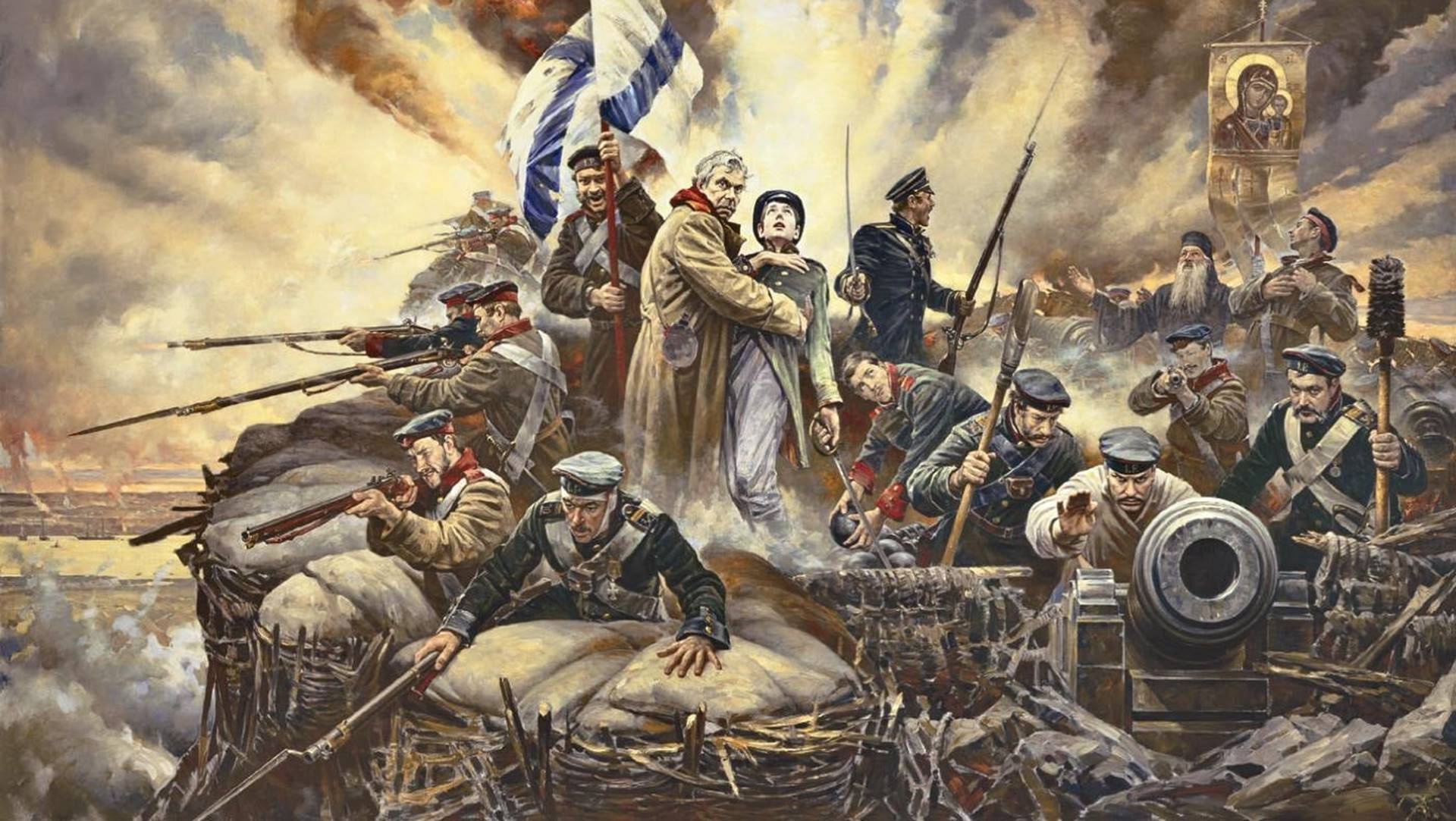167 years ago today in 1855, Russian soldiers have now been under siege for over 3 months in the city of Sevastopol on the Crimean Peninsula

During the 19th century, one of the older superpowers of the world, the Ottoman Empire, began to fall apart. First in the 1820s with the Greek Revolution and European powers intervening to liberate the Greek Isles that had been occupied for centuries.
Then the backbone to Ottoman military power, the Janissaries Corps, was crushed and forced to disband after an uprising in 1826. Russia would then go to war and decisively defeat the Ottomans in 1829. But they chose to keep the frail empire alive, to not draw the ire of other European powers. Then in 1831, Egypt under the famous Muhammad Ali Pasha successfully went to war with the Ottomans for more territory.
Further adding instability in the Ottoman region, tensions between the Roman Catholic and Eastern Orthodox churches began to build amongst the European nations as both disputed their rights of pilgrimage to holy sites in Jerusalem. The Russian government promoted the Eastern Orthodox, and the French government was the main advocate for Roman Catholics.
On February 8, 1945, German engineers blew the sluice gates at Wylermeer
Czar Nicholas of Russia did not want to go to war with any Christians and continually advocated for the partition of the Ottoman Empire for decades, but it fell on death ears. Britain and France put aside their bloody past and continued to diplomatically prevent the large Russian Empire from gaining territory at the Ottoman expense.
In 1852, Czar Nicholas presented his plan to break apart the Ottoman Empire and remove the Turks from Europe: Russia was to gain Moldavia and Romania. Serbia and Bulgaria would become independent states and the Adriatic coast would go to Austria. Cyprus, Rhoades, and Egypt would go to Britain while Crete would be given to France.
And Russia’s desire for the last few centuries would come to fruition with reestablishing Constantinople as a free Christian city under international protection. The war would begin between the Ottomans and Russia in 1853 as Russia easily destroyed their obsolete fleet and invaded the Balkans to put the city of Silistra under siege.
France and Britain would shock the Russian Empire by being one of the only instances in history of Christian nations fighting in alliance with an Islamic one. As they declared war together against Russia in 1854. France and Britain rushed their fleet and armies to the region to go save the Ottoman Empire.
Despite this setback for Russia, the Allied forces felt they would need to deal a more serious blow to Russian hegemony in the region and attacked Sevastopol, the base of the Russian Black Sea fleet on the Crimean Peninsula.
The invasion and siege of Sevastopol would become an iconic example of military-leadership incompetence that led to a botched prolonged siege that cost 100,000’s lives. After almost one year of siege, the city fell and with-it Russia’s military capabilities in the region.
The Crimean War highlights the romanticism of war from the Victorian Era, but it also showed the dark realities of warfare in a modernizing world. It was one of the first wars in human history to ever be photographed and reported on by modern newspapers in a daily fashion.
The brief conflict cost almost one million lives, with the vast majority of soldiers being killed by disease. The political ramifications and alliances of the conflict wouldn’t last a decade after the war as the Ottoman Empire fell out of favor with the European powers and Russia regained much of its lost territory and influence in the region.
The war is a rather unknown event in Western history, however to this date the resistance and suffering of the Russian garrison at Sevastopol have been idolized and used in their national identity. There are an estimated 100,000-200,000 Russian soldiers buried in Crimea.
Remembering Mustafa Kemal Paşa Atatürk through the city of Istanbul
[Online References]
(http://www.bbc.co.uk/…/british/victorians/crimea_01.shtml )
(https://www.britishbattles.com/crime…/siege-of-sevastopol/ )
(https://www.historyextra.com/…/your-60-second-guide-to…/ )
[Audiobook References]
Crimea
By: Orlando Figes
(https://www.audible.com/pd/Crimea-Audiobook/B07FCWNQXS)
Artwork by Vasilii Nesterenko (2005).
Authored by R.E. Foy
Napomena o autorskim pravima: Dozvoljeno preuzimanje sadržaja isključivo uz navođenje linka prema stranici našeg portala sa koje je sadržaj preuzet. Stavovi izraženi u ovom tekstu autorovi su i ne odražavaju nužno uredničku politiku The Balkantimes Press.
Copyright Notice: It is allowed to download the content only by providing a link to the page of our portal from which the content was downloaded. The views expressed in this text are those of the authors and do not necessarily reflect the editorial policies of The Balkantimes Press.
